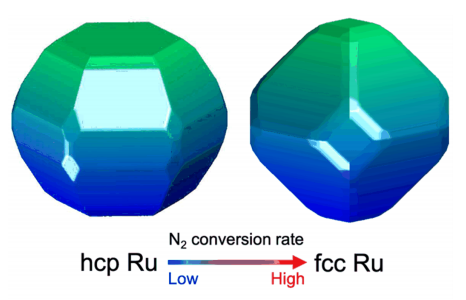Crystallographic and Morphological Sensitivity of N2 Activation over Ruthenium
Ruthenium (Ru) serves as a promising catalyst for ammonia synthesis via the Haber-Bosch process, identification of the structure sensitivity to improve the activity of Ru is important but not fully explored yet. We present a calculation and micro-kinetic rate calculation on nitrogen activation, a crucial step in ammonia synthesis, over a variety of hexagonal close-packed (hcp) and face-center cubic (fcc) Ru facets. Hcp {21-30} facet exhibits the highest activity toward N2 dissociation in hcp Ru, followed by the monatomic step sites. The other hcp Ru facets have N2 dissociation rates at least three orders lower. Fcc {211} facet shows the best performance for N2 activation in fcc Ru, followed by {311}, which indicates stepped surfaces make great contributions to the overall reactivity. Although hcp Ru {21-30} facet and monatomic step sites have lower or comparable activation barriers compared with fcc Ru {211} facet, fcc Ru is proposed to be more active than hcp Ru for N2 conversion due to the exposure of the more favorable active sites over step surfaces in fcc Ru. Our work provides new insights into the crystal structure sensitivity of N2 activation for mechanistic understanding and rational design of ammonia synthesis over Ru catalysts.


